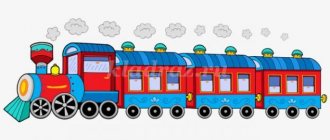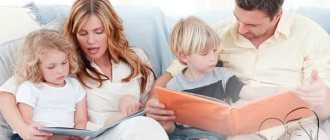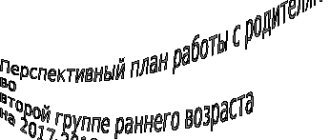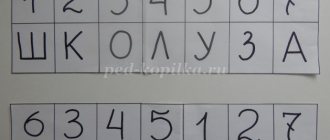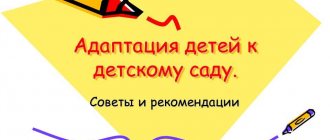Which centers in the group should be used for speech development?
Speech is one of the important mental functions. It allows you to transfer information. The child must acquire speech skills in preschool age. They are not given at birth, and speech has to be taught. This applies to all children without exception. Few people perceive speech by ear and independently. In most cases, it takes a lot of effort to teach speaking skills on time. This is a concern for both preschool teachers and parents.
A developing subject-spatial environment is an organized space with selected materials and equipment. It helps teach a child a variety of age-appropriate skills. Here it is written in detail about the requirements for a development environment.
A subject-spatial environment conducive to speech is formed in the premises of the preschool educational institution group. It consists of several centers (corners, or stands). For children of different ages, the list of stands may be almost the same, but their content will differ. The following centers will help you work with speech:
- speech and book;
- game;
- theatrical;
- art center;
- sensory-constructive;
- others (indirectly).
There are certain requirements for the developing subject-spatial environment in kindergarten. According to the Federal State Educational Standard, it should be easily transformable, rich in content, multifunctional, accessible, safe, aesthetically attractive, and psychologically comfortable. And quickly transform into a conventional space for the current game: a clinic, a cafe, a clearing in the forest.
An organized subject-speech environment should help resolve the following issues:
- develop vocabulary;
- work on grammatical structure (teach word formation and correct grammatical structures);
- develop coherent speech (learn to retell, describe, guess riddles);
- to form a full-fledged sound culture of speech (improve breathing, improve auditory attention and clarity of sound pronunciation);
- develop fine motor functions.
The group environment should be age appropriate. And allow the alternation of different activities: educational, social and independent. A rich and appropriate developmental environment will be exciting for the child. It will improve speech and diversify the development of the baby.
Summary of educational activities in the early age group "Bunny"
Goals of the lesson: formation of active and passive speech, development of onomatopoeia, fine and gross motor skills, development of the emotional sphere.
Demonstration material: house model, wooden mosaic “Sun”, health track, animal figures.
Teacher (unnoticeably turns on a tape recording of crying) - Is someone crying? Are you not crying? Who? Let's look. (everyone searches together, the teacher comments on the actions, they find a basket with a bunny, the crying stops) Teacher. That's who, it turns out, was crying. Who is this, children? (bunny). Touch the bunny with your hands. What is he like? (cold) The bunny is cold, he needs to be warmed up. Press him to your cheek. Look, the bunny has fur. Which? (fluffy, pet her) Educator. Guys, we have a little bunny visiting us. - Bunny, why were you crying? Tell me who offended you, what happened? Little bunny (speaks the teacher) How can I not cry? I was scared of the fox! I got lost in the forest. How can I find friends now? How will I get home? Educator. This is what happened to the bunny. He got lost and wants to get home to his mother bunny. Educator. Guys, can we help the bunny find his way home? Let's play with the bunny first so that he warms up and has fun.
Outdoor game “And the bunny and I are dancing.” (together with the teacher, the children perform movements corresponding to the words of the poem) And the bunny and I dance, dance, dance. We wave, wave, wave with our hands. With our feet we stomp, stomp, stomp. With our hands we clap, clap, clap.
Educator. We have warmed the bunny, cheered him up, and now let’s go to the bunny’s house along the path.
Low mobility game “On a level path”. Our feet walk along the level path, Top-top-top. Educator. (shows a model of the house) -What is this? (house) -What is this? (points to different parts of the house, encourages children to make statements) Educator. A new house has been built, who is the owner of that house? Grandma lives in this house. Let's go visit her, she will tell us the way to the bunny's house. Now I’ll put on an apron (shows). What is this? That's right, an apron. I'll be a grandmother. And someone else lives in my house. Who do you think?
Didactic game "Wonderful House". We have a wonderful house, and toys live in it. Vanya will approach the house, Vanya will ask: “Who lives? Who lives in the house?” Child. “Meow-meow” (the child chooses a kitten from the animals and shows it to the children). Educator. Children, who is this? (kitten, the same game is played with a dog and a cockerel). Educator. Now I will sprinkle the grains and call the cockerel: “Chick-chick-chick.” How do we call the cockerel? (children's answers) Let's treat the cockerel with grains. Educator. How does a cockerel peck? (kluk-kluk-kluk). Repeat. (children's answers). The cockerel loves to sing songs, let us sing him a song. (Children sing along with the teacher)
Nursery song "Cockerel". Edited by M.A. Bulatova. Cockerel, cockerel, Golden comb, Butter head, Silk beard! Why do you get up early, sing loudly, and don’t let Vanya sleep? Teacher-grandmother. While the cockerel is pecking at the grains, it’s time for you, children, to go accompany the bunny home. Goodbye, guys! Goodbye, little bunny! You will follow the tracks in the forest - You will come to the bunny’s house! Bunny. Well, thank you! Don't leave me in trouble, let's hurry home quickly. Educator. How can we see the tracks? The sun hid behind the clouds.
Didactic game “Assemble a whole from parts” (children assemble a “sun” from cut pictures)
The children followed the tracks (health path) to the bunny's house. Educator. What is this? (bunny’s house) And who is this? (bunny’s mother) The hare was happy that the little bunny was home again, and gave the children a gift - a drum.
Musical and didactic game "Drum". Vanya will take the stick and hit the drum, and immediately he will loudly answer us “bam-bam-bam.” Children repeat onomatopoeia in the game.
Author: Elena Vladimirovna Nikolaeva, 1st category teacher at MBDOU “Kindergarten No. 9 of a combined type” in Sosnogorsk.
The article is published in the author's edition

